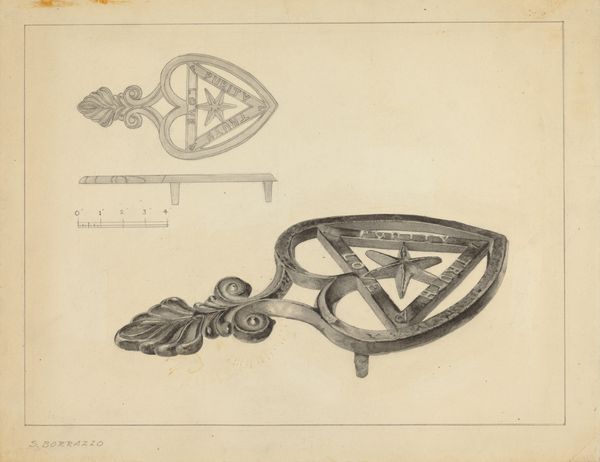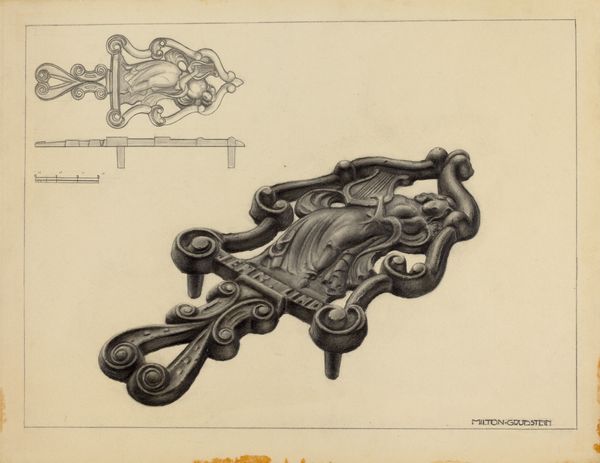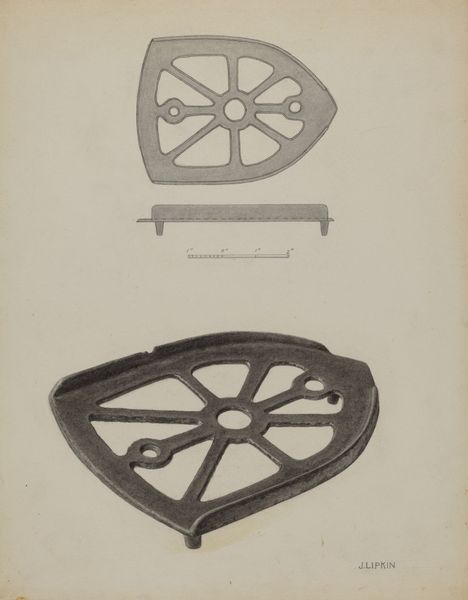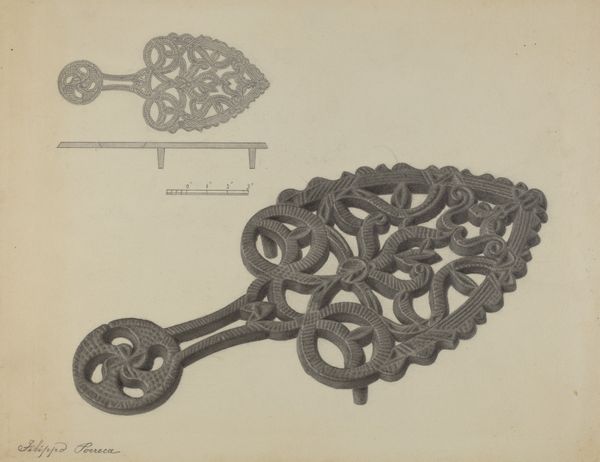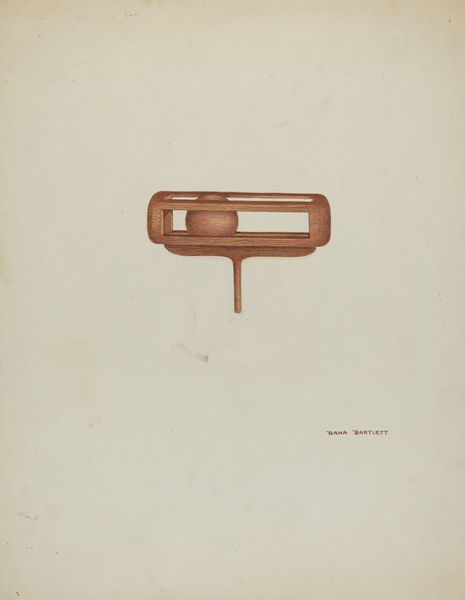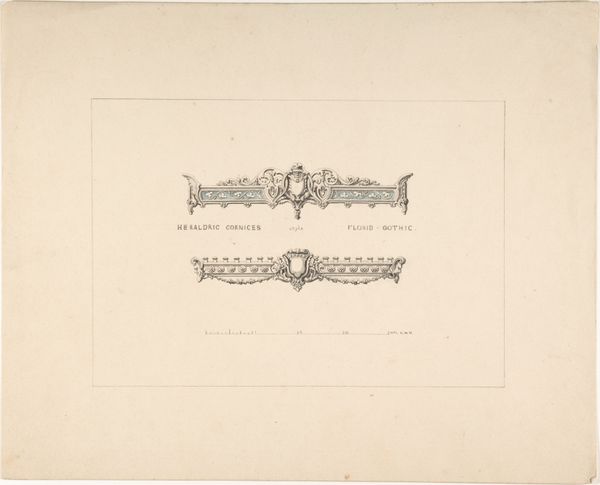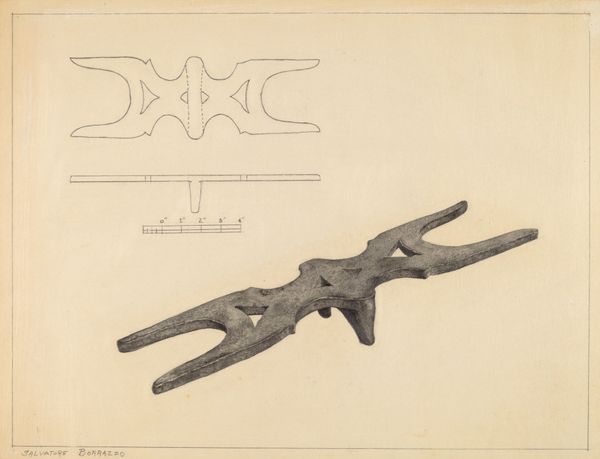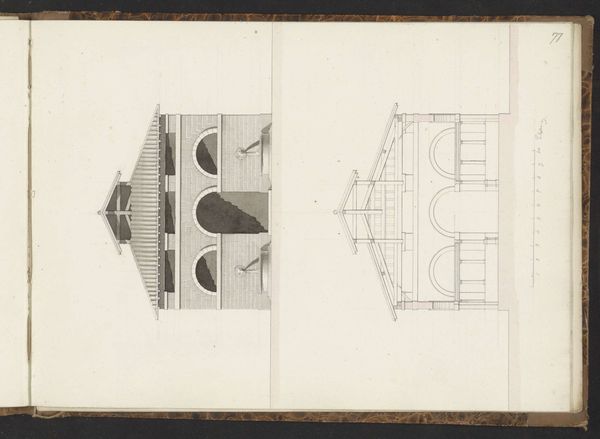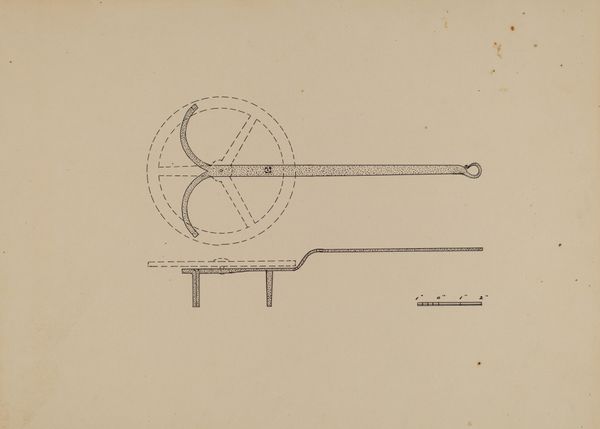
drawing, pencil
#
pencil drawn
#
drawing
#
toned paper
#
pencil sketch
#
pencil
#
academic-art
#
realism
Dimensions: overall: 22.2 x 28.8 cm (8 3/4 x 11 5/16 in.) Original IAD Object: 5 1/4" long; 4 1/8" wide; 3/4" high
Copyright: National Gallery of Art: CC0 1.0
Editor: We're looking at Helen Hobart's "Flat Iron Holder," a pencil drawing from around 1937. I find the meticulous detail and multiple views fascinating for what appears to be an ordinary, utilitarian object. What stands out to you? Curator: Well, immediately I think about the social and economic context of the 1930s. The Great Depression was still impacting American life. This isn't the artwork of leisure or high society. It's a focus on the domestic, the practical. Editor: That makes sense. So, is the attention to detail in the drawing a reflection of that societal value on practicality? Curator: Perhaps. The choice of rendering the object with precision, almost like a technical diagram, could indicate a reverence for craftsmanship and functionality in a time of scarcity. How do you see this in relation to Hobart's status as a woman artist at that time? Editor: It makes me wonder if focusing on domestic objects provided a space where female artists could be recognized and valued. It could also reflect a constraint placed upon them, too. Curator: Exactly! Think about the power dynamics within the art world. What types of art were exhibited? Whose stories were being told? A drawing of an iron holder might not have been considered 'high art,' but it held a specific value within a particular community. Editor: It's really interesting to consider the artwork in that broader historical and social context. Curator: It makes you think about what art gets celebrated and why, and who decides what matters. We bring our own social frameworks to our analysis. I learned more than I expected! Editor: Absolutely. It's shifted how I understand even simple subjects can speak volumes.
Comments
No comments
Be the first to comment and join the conversation on the ultimate creative platform.
